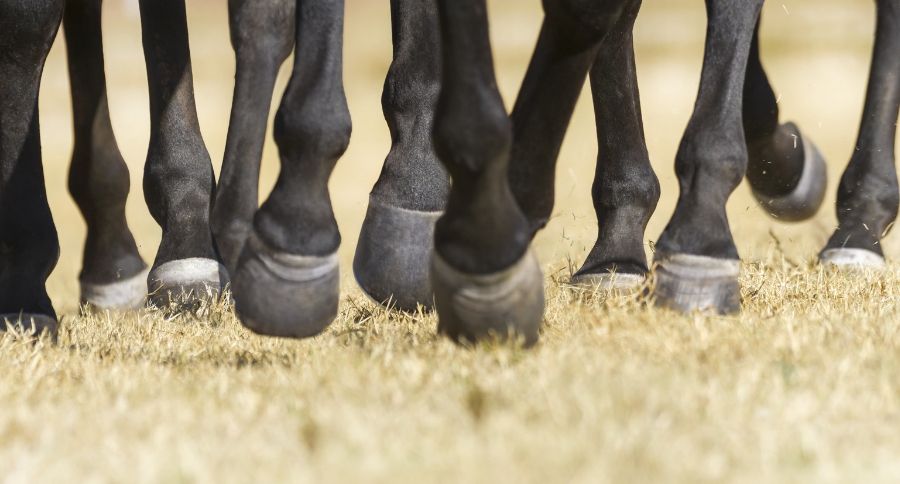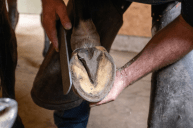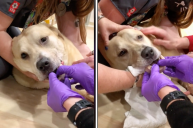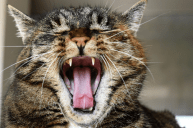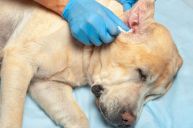As a certified vet tech, my courses focused on both small and large animals. We had an entire course on large animal diseases and of course, spent a lot of time learning about horse hoof care and anatomy.
The coffin bone, known as P3 and the pedal bone forms the foundation of the front half of the hoof capsule. This bone is connected to the hoof capsule via the laminae.
First, these are general guidelines if you think you're dealing with a fractured coffin bone. Talk with a farrier or veterinarian about how to diagnose and treat coffin bone fractures after you've identified this is what you're dealing with. This is simply a quick article on how to identify this fracture so you can get sound medical advice from an expert.
So how do you know you may be dealing with a fractured coffin bone? Experts say that sudden lameness after physical activity is a major indication of a coffin bone fracture. Heat and an increased digital pulse typically accompany lameness.
Western Horseman reports,
"Coffin bone fractures are likely caused by a traumatic injury to the outside of the hoof wall. This type of fracture can result from something as simple as a horse stepping on a rock, hitting a fence or applying too much weight on a single foot."
How do you diagnose? You always need digital radiographs to determine and diagnose a coffin bone injury. Hoof care experts can put together a treatment plan.
The treatment plan can consist of stall rest for several months.
Kentucky Equine Research reports that treatment is designed around decreasing pain and immobilizing the bone.
"Treatment is designed around immobilizing the bone and decreasing pain and inflammation. For most small, clean fractures, the horse can have a bar shoe applied to keep the hoof wall from moving. This stabilizes the structures inside the hoof and allows the bone to heal. If there are multiple fractures, the prognosis is not as good and healing will take longer. "
The vet will likely provide anti-inflammatories too. If the broken part of the bone is small and doesn't involve the joint, many horses heal well and can return to their previous level of performance.
Western Horseman also shares a few treatment options and one is briefly mentioned above:
- Shoeing - Depending on the type of fracture, applying a bar shoe to a horse with a pedal bone injury can help immobilize the bone. Bar shoes, circular shoes that join the heels of a horse, stabilize and minimize outward movement of the hoof capsule.
- Pour-in Pads - To add extra protection and support, pour-in pads products like Equi-Pak CS from Vettec are made of urethane adhesive that bonds to the sole and produces a soft, resilient supportive pad material.
Ask your vet about these options of course!
Other things you should know about the diagnosis? The AAEP, reports the following:
- When the vet performs diagnostic tests on your horse, this also may include applying hoof testers and possibly nerve blocks.
- The hoof testers are used to apply pressure to the hoof and underlying coffin bone. A reaction to the hoof testers indicates pain in the hoof or coffin bone that can be the result of a hoof abscess, navicular syndrome, or a coffin bone fracture.
- The nerve blocks cause desensitization of a certain area on the horse's limb and determine where the lameness is localized in the leg.
X-rays are then are needed to definitively identify a coffin bone fracture. Horse owners should be aware that all three of these tests will likely be done. Definitely note any severe lameness and the clinical signs discussed as these are a good indication you need the vet out to consider the severity of the fracture.
Coffin bone fractures can occur in seven different types! Pay attention to their weight bearing when your hand walking so you can tell the vet what you're seeing before they arrive.
A quick diagnosis is really important too so don't hesitate if you think this is a coffin joint issue. Fractures of the coffin bone can be addressed but don't wait!
What do you think about this advice? Share your thoughts below.
